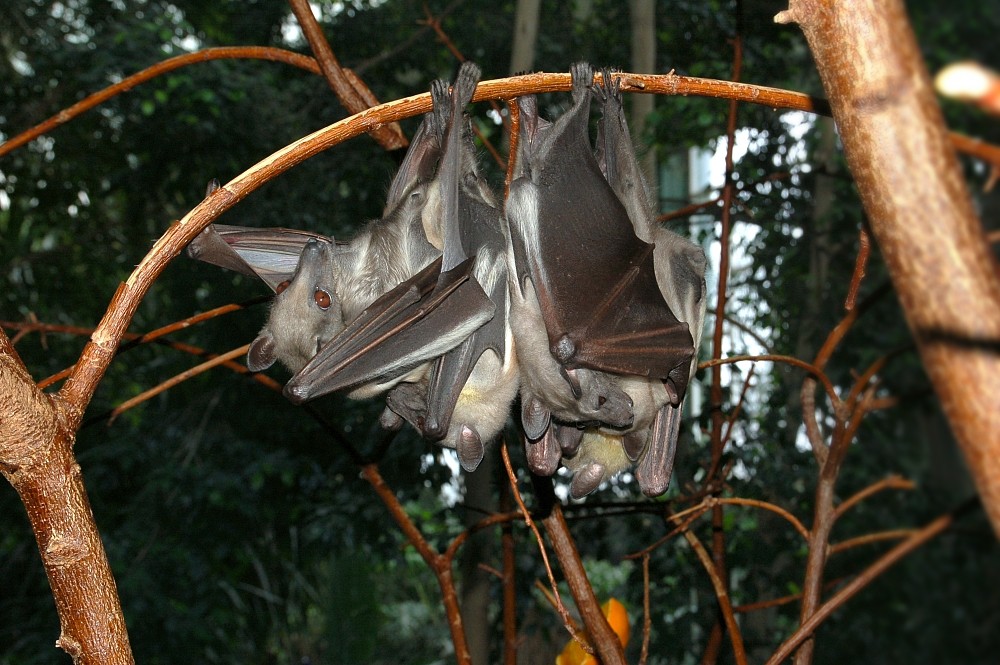Straw-coloured fruit bat
A species of Eidolon Scientific name : Eidolon helvum Genus : Eidolon
Straw-coloured fruit bat, A species of Eidolon
Scientific name: Eidolon helvum
Genus: Eidolon
Content
Description People often ask General Info
 Photo By Fritz Geller-Grimm , used under CC-BY-SA-2.5 /Cropped and compressed from original
Photo By Fritz Geller-Grimm , used under CC-BY-SA-2.5 /Cropped and compressed from original Description
Gaining its name from the color of its fur, the straw-coloured fruit bat is a decidedly social bat, tending to roost together in groups from 100,000 all the way up to 1,000,000. The usual activities of this nocturnal bat are actually an important part of many plant life cycles, as this species pollinates and/or disperses the seeds of more than 130 genera of plants.
People often ask
General Info
Lifespan
15-22 years
Diet
Straw-coloured fruit bat primarily feeds on fruits, making it a predominant frugivore. Their diet consists notably of shea and oil palm fruits. On occasion, straw-coloured fruit bat also include leaves, petals, and insects in their meals.
Appearance
Straw-coloured fruit bat is a large fruit bat, with a wingspan reaching up to one meter. Its fur is dark brown to greyish-brown, while its face and neck are typically fox-like and pale. Its body has a slender shape, with a pointed muzzle and large, rounded ears. The animal's wings, dark in color, are membranous and long. There are no significant differences in appearance due to age, gender, or subspecies.
Behavior
The straw-coloured fruit bat is a highly social species. The bats tend to live in groups of over 100,000 and at times that number may increase to almost one million. At night the bats leave the roost in smaller groups to find food by sight and smell. They have also been seen chewing on soft wood for moisture. These bats can also pollinate flowers and disperse seeds through the forests. They are the main agents of seed dispersal for the increasingly rare and economically significant African teak tree Milicia excelsa. Although they feed at night, straw-coloured fruit bats are not necessarily nocturnal. During the day, they will be found resting and moving among the colony. Year to year, season to season, the bats will return to the same place where they found food the previous year or season. The mating season of straw-coloured fruit bats is from April to June and is not synchronized among the bats. Implantation is delayed until October and is synchronized with all females implanting during this time. The delay corresponds one of two dry periods in the home range of the bats. Birth occurs in February and March. 
Population
Decreasing